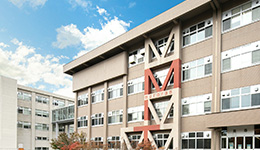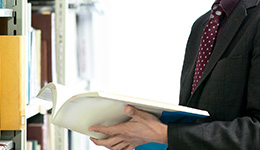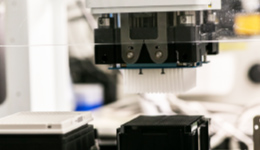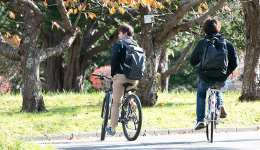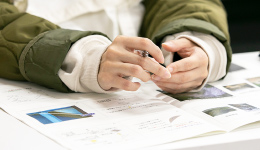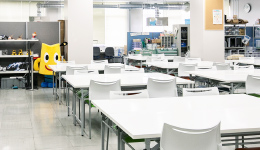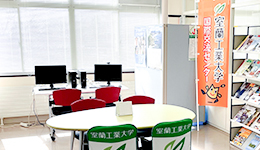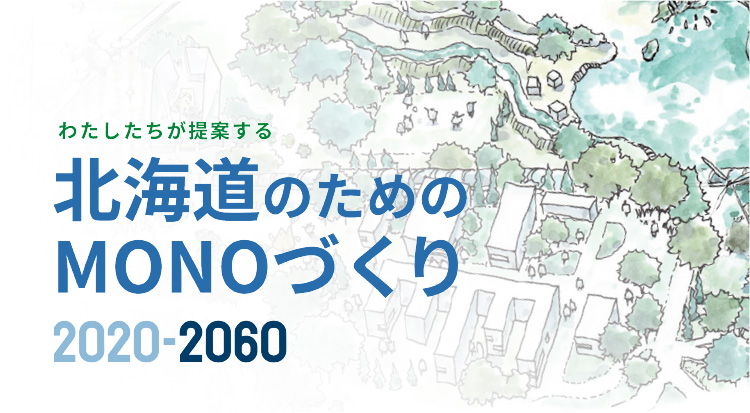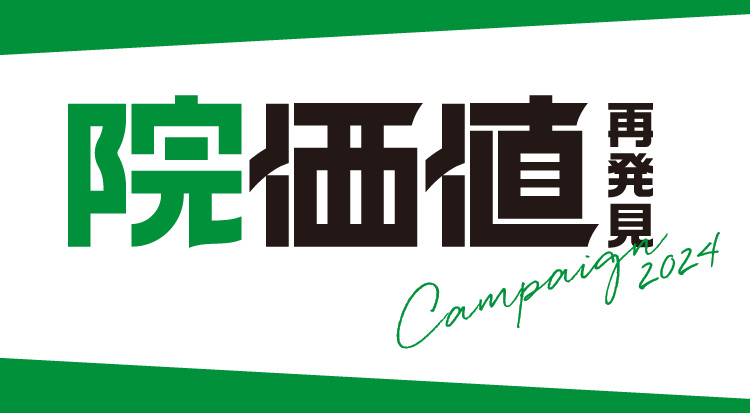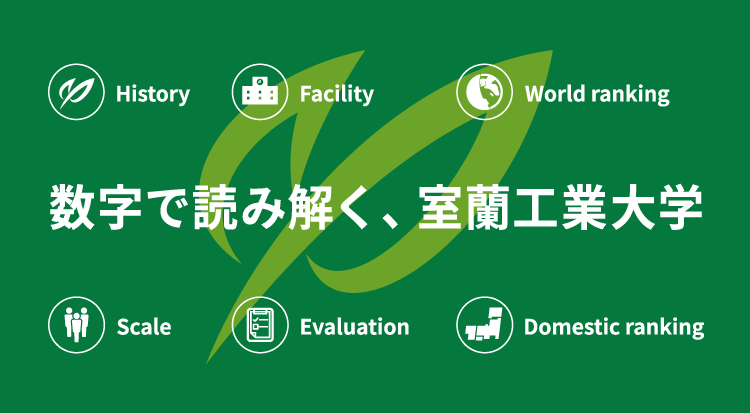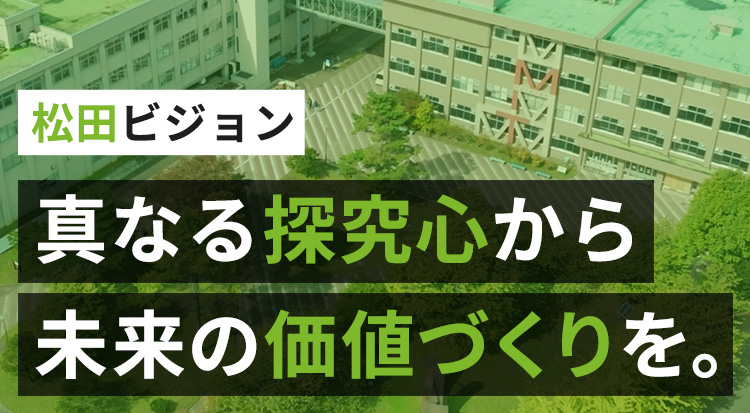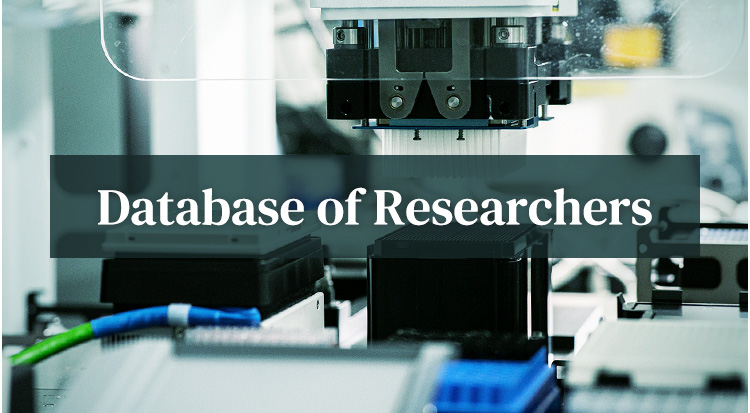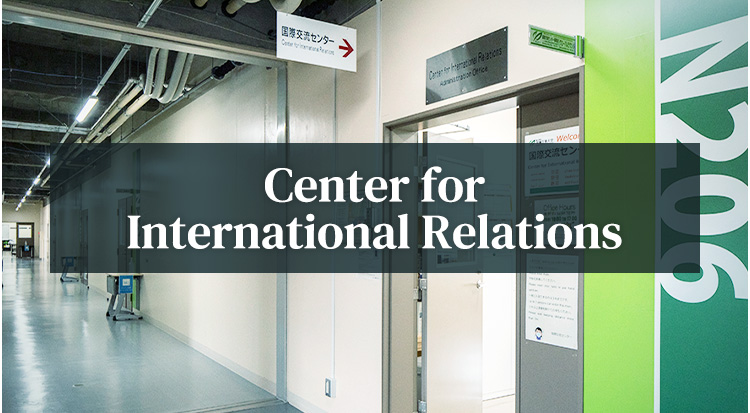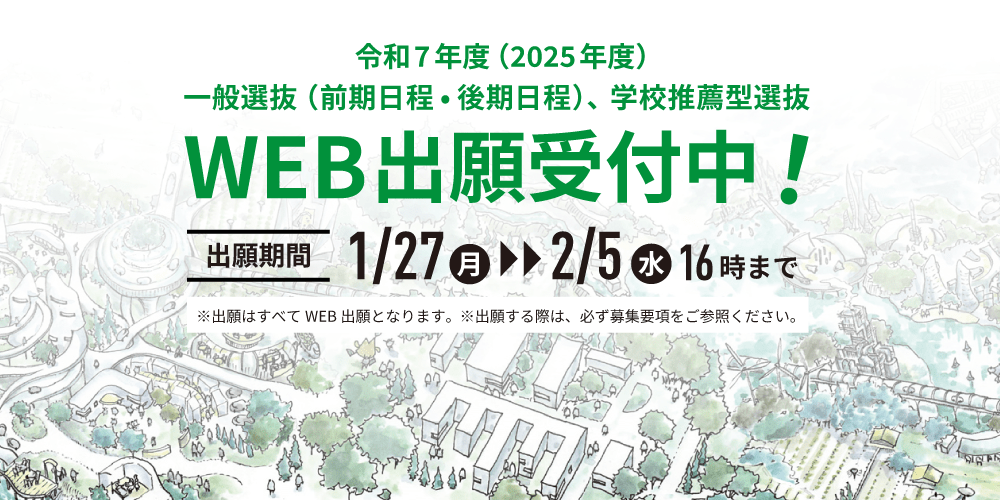MURORAN
INSTITUTE OF
TECHNOLOGY
From a true spirit of inquiry
Creating future value.
TOPICS
INFORMATION
- 2025.07.15AnnouncementWe have been ranked in the THE Impact Ranking 2025 for the third consecutive year
- 2025.07.15Announcement of Entrance Examination Information【 Admission for Graduate School in April 2026 Master’s Course Recommendation Entrance Examination, Graduate School for Admission in October 2025 Master’s Course Entrance Examination for International Students (Overseas Application)】
- 2025.07.14NewsDong Bingxiong Vice President was featured as an interlocutor in "between us: We are rethinking AI and creativity"
- 2025.07.14Notice " Project to Support Development of Interdisciplinary Doctoral Students to Drive Next-Generation Innovation" FY2024 Results Report Meeting & FY2025 Top of Top Academy Open Call Information Session to be held
- 2025.07.10Notice : Recruiting participants for the open lecture "The Science of Digital Cameras and Photography"
- 2025.07.08 Entrance Examination InformationRegarding the implementation of the 2026 General Entrance Examination for Transfer Students
- 2025.07.08News Muroran Institute of Technology Digital Campus Promotion Office won the "Microsoft 365 Copilot Cup 2025"
- 2025.07.08NoticeA paper by a graduate student of our university has been selected as a "Feature paper" by MDPI
- 2025.07.04Notice : "Supporting rising prices! Providing balanced meals for students! 100 yen set meals [2nd round]"
- 2025.07.04Notice : We will hold the 2025 Technical Seminar "The Future of Production Technology Paved by Metal 3D Printers"
- 2025.07.15AnnouncementWe have been ranked in the THE Impact Ranking 2025 for the third consecutive year
- 2025.07.14NewsDong Bingxiong Vice President was featured as an interlocutor in "between us: We are rethinking AI and creativity"
- 2025.07.14Notice " Project to Support Development of Interdisciplinary Doctoral Students to Drive Next-Generation Innovation" FY2024 Results Report Meeting & FY2025 Top of Top Academy Open Call Information Session to be held
- 2025.07.10Notice : Recruiting participants for the open lecture "The Science of Digital Cameras and Photography"
- 2025.07.08News Muroran Institute of Technology Digital Campus Promotion Office won the "Microsoft 365 Copilot Cup 2025"
- 2025.07.08NoticeA paper by a graduate student of our university has been selected as a "Feature paper" by MDPI
- 2025.07.04Notice : "Supporting rising prices! Providing balanced meals for students! 100 yen set meals [2nd round]"
- 2025.07.04Notice : We will hold the 2025 Technical Seminar "The Future of Production Technology Paved by Metal 3D Printers"
- 2025.07.04NoticeJapan Student Services Organization (JASSO) Overseas Student Support System (Agreement Acceptance) Scholarship Program: Training program for National Pingtung University in Taiwan was held
- 2025.07.02Notice : "Summer College Admissions Consultation Session 2025 (Online)" will be held
- 2025.07.15Announcement of Entrance Examination Information【 Admission for Graduate School in April 2026 Master’s Course Recommendation Entrance Examination, Graduate School for Admission in October 2025 Master’s Course Entrance Examination for International Students (Overseas Application)】
- 2025.07.08 Entrance Examination InformationRegarding the implementation of the 2026 General Entrance Examination for Transfer Students
- 2025.06.26Entrance Examination InformationApril 2026 Admission Graduate School Master’s Course Recommendation Entrance Examination
- 2025.06.16Entrance Examination InformationChanges to application requirements for (privately funded international students) in the comprehensive selection process for the 2026 academic year (2025 academic year examinations) (Announcement)
- 2025.06.06 Entrance Examination Information Result Announcement [2026 Transfer Admission Recommendation Entrance Examination]
- 2025.05.27Entrance Examination InformationPublication of the Graduate School Doctoral Course Admission Guidelines for October 2025 and April 2026 Entrance
- 2025.05.23 Entrance Exam Information Result Announcement [2025 October Enrollment Graduate School Doctoral Course (International Student Entrance Exam (2nd Round of Overseas Applications) / CS x Specialized Entrance Exam)]
- 2025.05.20Entrance Examination InformationAbout the FY2026 Transfer Admission Recommendation Examination
- 2025.05.13Entrance Examination InformationPublication of the Graduate School Master’s Course Admission Guidelines for October 2025 and April 2026 Entrance
- 2025.05.02 Advance your entrance exam information , science girls! A talk session-style information session with three national universities in Hokkaido - Muroran Institute of Technology x Hokkaido Faculty of Engineering x Kitami Institute of Technology will be held to talk about the real thoughts of science girls -
- 2025.06.12Press ReleaseMuroran Muroran Institute of Technology has been selected as the SX Research and Development Center for the Space Strategy Fund Program by the "Detonation Engine and Space Propulsion Engineering Innovative Research Center Formation" (Representative: Nagoya University)
- 2025.06.06Press ReleaseMuroran Muroran Institute of Technology The Center for Computer Science has established a new logo
- 2025.05.26Press ReleaseMuroran Muroran Institute of Technology is the first university in Japan to introduce Microsoft 365 Copilot to its entire administrative department
- 2025.04.11Press ReleaseMuroran City launches support program for Muroran Institute of Technology using the "Hometown Tax System"
- 2025.04.10Press Release : "Uilta Audio Materials" (Muroran Working Papers in Liguistics, No.2) has been published
- 2025.04.10Press ReleaseUncovering the secret of the adhesive power of spider silk - Discovery of "natural ionic liquid" that exists in nature -
- 2025.03.10 Press Release [Joint Press Release] The mechanism by which nematodes reverse their salty taste preference elucidated: Neural circuits memorize the salt concentration of the environment in which they grew up along with their food and navigate the nematode in that direction.
- 2025.02.25 Press Release [Joint Press Release] Shining a light on the "strange metallic state" that is the stage for high-temperature superconductivity ~ Hopes for elucidating the origin of high-temperature superconductivity and applications to quantum technology ~ (Hiroshima University, Muroran Institute of Technology Institute of Technology, Institute for Molecular Science, National Institutes of Natural Sciences, and SOKENDAI)
- 2025.01.30Press ReleaseElucidation of the mechanism by which metals emit light in hundreds of femtoseconds
- 2025.01.21Press ReleaseThe 1st Deer Summit - In Harmony with Nature - will be held at the "City in Harmony with Nature" co-creation center
- 2025.04.24 " Food & Health Innovation Forum" will be held by the three research universities (Muro Institute of Technology, Tokyo University of Science, and Kyushu Institute of Technology)
- 2025.04.10Research " Uilta Audio Materials" (Muroran Working Papers in Liguistics, No.2) has been published.
- 2025.04.10ResearchUncovering the secret of the adhesive power of spider silk - Discovery of "natural ionic liquid" that exists in nature -
- 2025.03.25The website of the Research MONO Creation Future Co-Creation Organization has been renewed.
- 2025.02.25 Research [Joint Press Release] Shining a light on the "strange metallic state" that is the stage for high-temperature superconductivity ~ Hopes for elucidating the origin of high-temperature superconductivity and applications to quantum technology ~ (Hiroshima University, Muroran Institute of Technology Institute of Technology, Institute for Molecular Science, National Institutes of Natural Sciences, SOKENDAI)
- 2025.02.21 Chitose Institute of Science and Technology x Muroran Institute of Technology The Center for Computer Science Semiconductor Workshop to be held
- 2025.01.30ResearchUncovering the mechanism by which metals emit light in hundreds of femtoseconds
- 2025.01.23Assistant Professor Assistant Professor Kage has been selected for the 8th (2024) Research Grant from the Ohsumi Foundation for Basic Science Research
- 2025.01.14ResearchWe conducted a parachute deployment test using a rocket sled with JAXA
- 2025.01.14ResearchIn collaboration with a research team led by Nagoya University, we have successfully demonstrated the operation of a detonation engine using liquid fuel and liquid oxidizer in space for the first time in the world.
- 2025.05.20CollaborationA partnership agreement was signed to build a Muroran City robotics and IoT introduction promotion network
- 2025.05.20 Collaboration "52nd Rangaku Concert" will be held
- 2025.05.13Selected for the "Support Program for Female Junior and Senior High School Students to Choose Science-related Courses"
- 2025.04.24 " Food & Health Innovation Forum" will be held by the three partner universities (Muro Institute of Technology, Tokyo University of Science, and Kyushu Institute of Technology)
- 2025.04.09The 3rd issue of the Collaborative Public Relations Office Newsletter has been published.
- 2025.03.25The website of the Collaborative MONO Creation Future Co-Creation Organization has been renewed.
- 2025.02.21 Chitose Institute of Science and Technology x Muroran Institute of Technology The Center for Computer Science Semiconductor Workshop to be held
- 2025.02.06 The second edition of the Public Relations Office Newsletter has been published.
- 2025.01.14 Collaborative Social Impact Expression Workshop STEP 1 and Yomo-Yama no Utage were held
- 2024.12.25The Collaborative Education and Research & Financial Report 2024 has been published.
- 2025.07.04International Student Services Organization (JSTA) Overseas Student Support System (Agreement Acceptance) Scholarship Program: Training program for National Pingtung University, Taiwan was held
- 2025.03.13 international We are ranked 1251+ in the "Engineering" category of the 2025 THE World University Rankings by Academic Field.
EVENT
- 2025.07.14Event Information: "Project to Support Development of Interdisciplinary Doctoral Students to Drive Next-Generation Innovation" FY2024 Results Report Meeting & FY2025 Top of Top Academy Open Call Briefing Session to be held
- 2025.07.10Event InformationCalling for participants for the open lecture "Digital Cameras and the Science of Photography"
- 2025.07.04Event Information: Reiwa 7 Technical Seminar "The Future of Production Technology Paved by Metal 3D Printers" will be held
- 2025.07.02Event Information: "Summer College Admissions Consultation Session 2025 (Online)" will be held
- 2025.07.01Event Information [Application Period: 7/1 (Tue) 9:00-7/28 (Mon) 12:00] We have started accepting pre-applications for the 2025 Open Campus.
- 2025.06.30Event Information RoomTechnology Science School "Jr. Robot School 2025 Robot Soccer Contest Edition" Enrollment Recruitment
- 2025.06.26Event Information: Next Generation Leader Development Seminar 2025 will be held
- 2025.06.26Event Information [Application Period: 7/1 (Tue) 9:00-7/28 (Mon) 12:00] About the Open Campus in 2025
- 2025.06.23Event Information "STARTUP HighSchool 2025 in Muroran Institute of Technology"
- 2025.06.16Event InformationSocial Impact Expression Workshop STEP1 (2nd edition) and Yomo-Yama no Utage will be held
- 2025.07.14Event Information: "Project to Support Development of Interdisciplinary Doctoral Students to Drive Next-Generation Innovation" FY2024 Results Report Meeting & FY2025 Top of Top Academy Open Call Briefing Session to be held
- 2025.07.10Event InformationCalling for participants for the open lecture "Digital Cameras and the Science of Photography"
- 2025.07.04Event Information: Reiwa 7 Technical Seminar "The Future of Production Technology Paved by Metal 3D Printers" will be held
- 2025.07.02Event Information: "Summer College Admissions Consultation Session 2025 (Online)" will be held
- 2025.07.01Event Information [Application Period: 7/1 (Tue) 9:00-7/28 (Mon) 12:00] We have started accepting pre-applications for the 2025 Open Campus.
- 2025.06.30Event Information RoomTechnology Science School "Jr. Robot School 2025 Robot Soccer Contest Edition" Enrollment Recruitment
- 2025.06.26Event Information: Next Generation Leader Development Seminar 2025 will be held
- 2025.06.26Event Information [Application Period: 7/1 (Tue) 9:00-7/28 (Mon) 12:00] About the Open Campus in 2025
- 2025.06.23Event Information "STARTUP HighSchool 2025 in Muroran Institute of Technology"
- 2025.06.16Event InformationSocial Impact Expression Workshop STEP1 (2nd edition) and Yomo-Yama no Utage will be held
- 2025.06.16Event Report: Award ceremony for "Muropyon Design Contest 2024 ~Your illustrations will be turned into merchandise!~" was held
- 2025.06.06Event Report: Second-year students from Sapporo Municipal Tondenkita Junior High School visit our university
- 2025.06.06Event Report: "Food & Health Innovation Forum" held by three universities (Muroran Institute of Technology, Tokyo University of Science, and Kyushu Institute of Technology)
- 2025.06.05Event ReportWe held a discussion meeting with Professor Emeritus
- 2025.05.30Event ReportWe held a Giving Campaign information session
- 2025.05.30Event Report The winners of the "Muropyon Design Contest 2024 ~Turn your illustrations into merchandise!~" have been decided!
- 2025.05.30Event Report: " Muroran Institute of Technology x Meet My Copilot" co-hosted with Microsoft Japan Co., Ltd.
- 2025.05.28Event Report: Come on up, science girls! A talk session-style information session with three national universities in Hokkaido - Muroran Institute of Technology x Hokkaido Faculty of Engineering x Kitami Institute of Technology will share their thoughts on science girls - was held
- 2025.05.27Event Report: " Muroran Institute of Technology Student Public Relations Staff "Muro Ko-ho" Appointment Ceremony"
- 2025.05.23Event ReportWe implemented the "Food Support Toktok Project" at the student cafeteria with the support of a company (Ito Kogyo Co., Ltd.)
RANKING & AWARDS University evaluation and achievements
Ranking
Awards and Recognition
